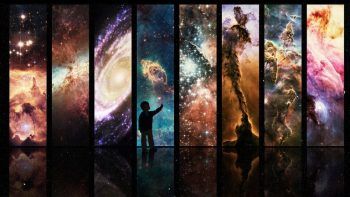by Ashutosh Jogalekar
 There is a sense in certain quarters that both experimental and theoretical fundamental physics are at an impasse. Other branches of physics like condensed matter physics and fluid dynamics are thriving, but since the composition and existence of the fundamental basis of matter, the origins of the universe and the unity of quantum mechanics with general relativity have long since been held to be foundational matters in physics, this lack of progress rightly bothers its practitioners.
There is a sense in certain quarters that both experimental and theoretical fundamental physics are at an impasse. Other branches of physics like condensed matter physics and fluid dynamics are thriving, but since the composition and existence of the fundamental basis of matter, the origins of the universe and the unity of quantum mechanics with general relativity have long since been held to be foundational matters in physics, this lack of progress rightly bothers its practitioners.
Each of these two aspects of physics faces its own problems. Experimental physics is in trouble because it now relies on energies that cannot be reached even by the biggest particle accelerators around, and building new accelerators will require billions of dollars at a minimum. Even before it was difficult to get this kind of money; in the 1990s the Superconducting Supercollider, an accelerator which would have cost about $2 billion and reached energies greater than those reached by the Large Hadron Collider, was shelved because of a lack of consensus among physicists, political foot dragging and budget concerns. The next particle accelerator which is projected to cost $10 billion is seen as a bad investment by some, especially since previous expensive experiments in physics have confirmed prior theoretical foundations rather than discovered new phenomena or particles.
Fundamental theoretical physics is in trouble because it has become unfalsifiable, divorced from experiment and entangled in mathematical complexities. String theory which was thought to be the most promising approach to unifying quantum mechanics and general relativity has come under particular scrutiny, and its lack of falsifiable predictive power has become so visible that some philosophers have suggested that traditional criteria for a theory’s success like falsification should no longer be applied to string theory. Not surprisingly, many scientists as well as philosophers have frowned on this proposed novel, postmodern model of scientific validation. Read more »
